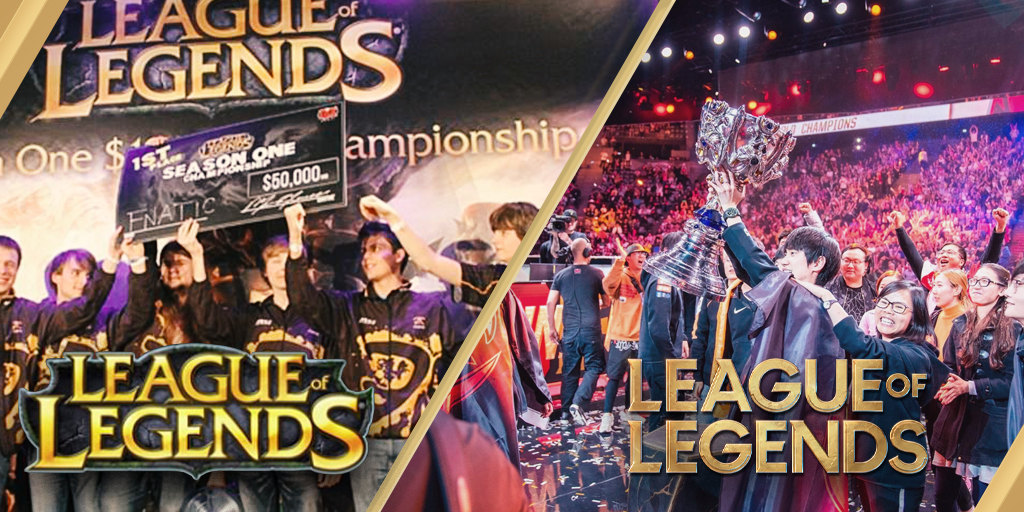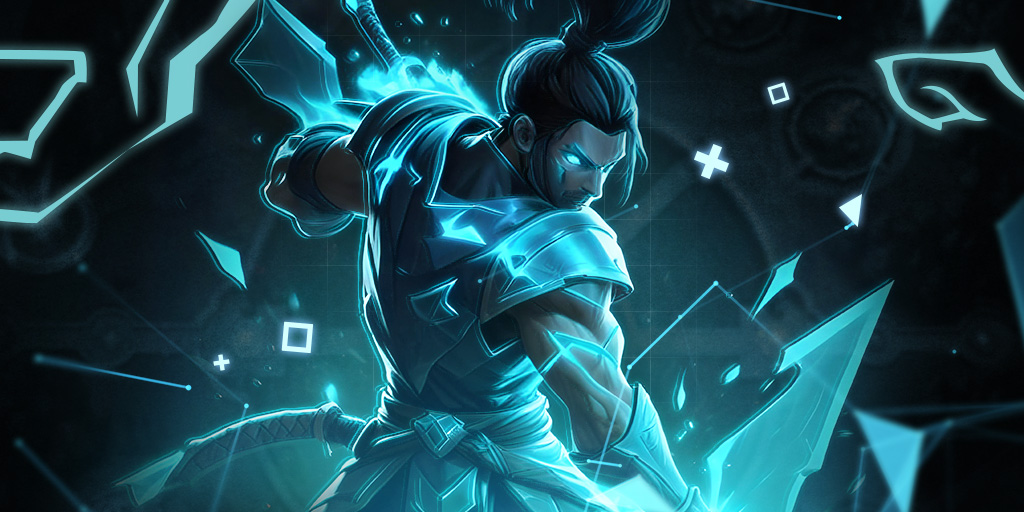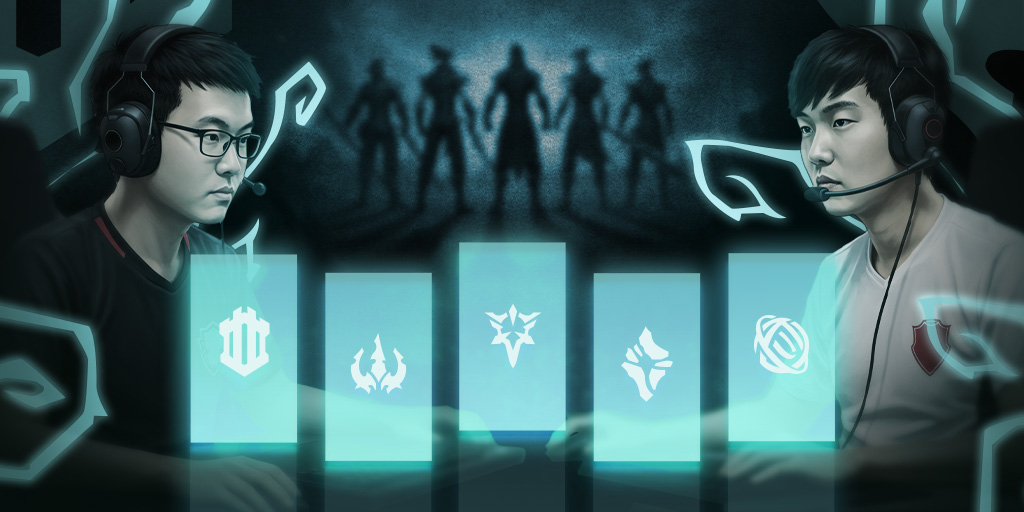League of Legends is the leading esports title in the world, Pinnacle reflects on the history of League of Legends esports and how it has evolved from humble beginnings to a global phenomenon.
When was League of Legends created?
League of Legends (LoL) was created and released by Riot Games on 27 October 2009.
LoL is a multiplayer online battle arena (MOBA) game that took inspiration from a popular Warcraft III: The Frozen Throne mod, Defense of the Ancients.
The game revolves around a fictional isometric battlefield called ‘Summoners Rift’ and involves two teams of five players facing each other using unique characters called ‘Champions’. The objective of the game is to destroy the enemy teams’ base structure known as the ‘Nexus’.
LoL has an extensive item, level and abilities system for players to customise their champion while they play a match which typically lasts between 30 minutes to 60 minutes. Champions are differentiated by roles within the game. For more information on the roles in League of Legends check out our guide.
LEAGUE OF LEGENDS ESPORTS
Get great odds on League of Legends with Pinnacle.
Sign up hereLog in hereA history of League of Legends esports
LoL esports had humble beginnings following its 2009 release, with the initial competitive scene played online with LAN events hosted by ESL, IGN and MLG among others. The primary competitors came from North America and Europe with some of the most iconic esports teams we know of today, like Team SoloMid (TSM) and Counter Logic Gaming (CLG), founded to compete in LoL.
The first major tournament in LoL would come in 2011 with the Season one League of Legends World Championship taking place at DreamHack Summer in Jönköping, Sweden for a $100,000 prize pool. The Season one World Championship had eight participants in total: the top three teams from North America and Europe, a representative from Singapore and a representative from the Philippines.
Viewership numbers for the Season one World Championship were impressive at the time, drawing a total of 1.69 million unique viewers of which 210,000 dropped by to watch Fnatic beat Against All Authority (2 – 1) to take the first League of Legends World Champions title.
Growing League of Legends esports internationally
A major objective for Riot Games moving into Season two was player growth outside its domestic markets of North America and Europe. In late 2011, the company would launch both the Korean and Chinese game servers to a positive reception, opening the game up to two of the biggest gaming markets in the world. The introduction of Korea in particular would reshape competitive LoL, as the country had at the time the most advanced esports ecosystem in the world with a history spanning back into the late noughties with Blizzard Entertainments’ real time strategy game, ‘Starcraft’.
The average minute audience for the 2019 World Championship Finals was estimated to be 21.8 million, up from 19.6 million in 2018 representing a 11% YoY increase.
China on the other hand was set for a breakout, as the world’s second-largest economy brought in non-endemic ownership worth billions of dollars. The popularity of the game in the country was astronomical, garnering millions of fans and quickly rising as the most popular esports title with as many as 100 million domestic viewers watching Chinese team FunPlux Phoenix lift the Summoners Cup in 2019.
As part of creating a competitive ecosystem, Season two saw the establishment of the League of Legends Championship Series (LCS), one in North America and the other in Europe, made up of eight teams each. The LCS featured a promotion and relegation system up until mid-2018 where a change to a franchised league system for the North American league was made by Riot Games. The European LCS underwent the same change at the beginning of 2019 along with a rebrand to the League of Legends European Championship (LEC).
In total, there are 12 professional leagues around the world:
|
League name |
Region |
|
League of Legends Championship Series (LCS) |
North America |
|
League of Legends European Championship (LEC) |
Europe |
|
League of Legends Champions Korea (LCK) |
South Korea |
|
League of Legends Pro League (LPL) |
China |
|
Pacific Championship Series (PCS) |
Taiwan, Hong Kong, Macau and South East Asia |
|
Vietnam Championship Series (VCS) |
Vietnam |
|
League of Legends Continental League (LCL) |
Russia |
|
Turkish Championship League (TCL) |
Turkey |
|
Campeonato Brasileiro de League of Legends (CBLOL) |
Brazil |
|
Liga LatinoAmerica (LLA) |
Latin America |
|
League of Legends Japan League (LJL) |
Japan |
|
Oceanic Pro League (OPL) |
Oceania |
The era of South Korean dominance in LoL esports
Following the establishment of professional regional leagues, South Korea’s League of Legends Champions Korea (LCK) would rise to prominence as the most competitive league in the world with a significant gap in skill when compared to other regions. In its inaugural season the LCK sent Azubu Frost and NaJin Sword to the Season two League of Legends World Championship with the former reaching the Grand Finals but falling short of a championship win versus the Taipei Assassins. Whilst the result was disappointing, Azubu Frost and Najin Sword previewed the potential the region had for producing championship contenders.
Fast forward to 2013, the year marked the beginning of an era for South Korean LoL with the creation of two of the most successful teams in Worlds history, SK Telecom T1 (SKT) and Samsung Galaxy Pro-Game Team (SG). A young rookie would make their debut during this time, Lee “Faker” Sang-Hyeok, a talented Mid Laner scouted directly from solo queue (the public pool of players playing the competitive mode in League of Legends). Faker would dominate the competition in his role throughout the regular season, culminating in one of the most iconic moments in esports, the Faker vs. Ryu Zed outplay in the Hot6ix Lol Champions Summer 2013 Final.
SKT and Faker would carry this momentum into the Season 3 World Championship going 7 – 1 in the Group Stage before beating Gamania Bears (2 – 0) in the Quarter-finals, NaJin Black Sword (3 – 2) in the Semi-finals and Royal Club (3 – 0) in the Finals to claim the Season three World Championship title. Worlds would be won by SKT two more times with back-to-back wins in 2015 and 2016, while Samsung Galaxy would take the title in 2014 and 2017 when SKT fell short.
In the LCS, Koreans imports represented 21% of the professional players in the league at the beginning of 2019, ahead of Europe (18%) and other regions (9%).
During this period a number of teams from North America, Europe and China actively imported South Korean talent to bolster their own lineups in the hopes that they could replicate the international success seen from teams in the LCK. The most successful manifestation of what some would dub the “Korean exodus” are Chinese Esport team Invictus Gaming (IG), who imported Mid Laner Song “Rookie” Eui-jin (formerly KT Rolster Arrows) and Top Laner Kang “TheShy” Seung-Iok (formerly Rebels Anarchy) forming the foundation for a team that would win the World Championship in 2018.
IG’s win of the Summoners Cup would officially end the era of dominance for South Korean teams at the World Championship and for the first time revealed that the gap in skill between the major competitive regions was narrowing.
League of Legends by the numbers
Official numbers published by Riot Games indicated that there were 5 million monthly players in 2011, 32 million in 2012 and 67 million in 2014. Whilst 2014 was the last year the company would officially publish player base statistics, estimates put the number of monthly players in 2019 between 80 million and 115 million.
Referenced earlier, the 2011 World Championship attracted an estimated 1.69 million unique viewers, a peak concurrent viewership of 210,000 and featured a $100,000 prize pool. Almost a decade later, the 2019 World Championship would attract an estimated 100 million unique viewers, a peak concurrent viewership of 44 million and feature a $2,250,000 prize pool.
How have professional players benefitted from the growth of the game? In 2013 Riot Games introduced a minimum baseline salary of $75,000 for LCS professional players with the average salary rising to $320,000 by 2018 according to Forbes. In the 2019 LCS off-season, ESPN reported that League of Legends Top laner Heo “Huni” Seung-hoon had signed a two year contract with Team Dignitas worth $2.3 million dollars in guaranteed salary, making him one of the highest-paid players in the league.
By multiple metrics League of Legends esports future remains bright, and is set to remain the leading esports title into the next decade.



